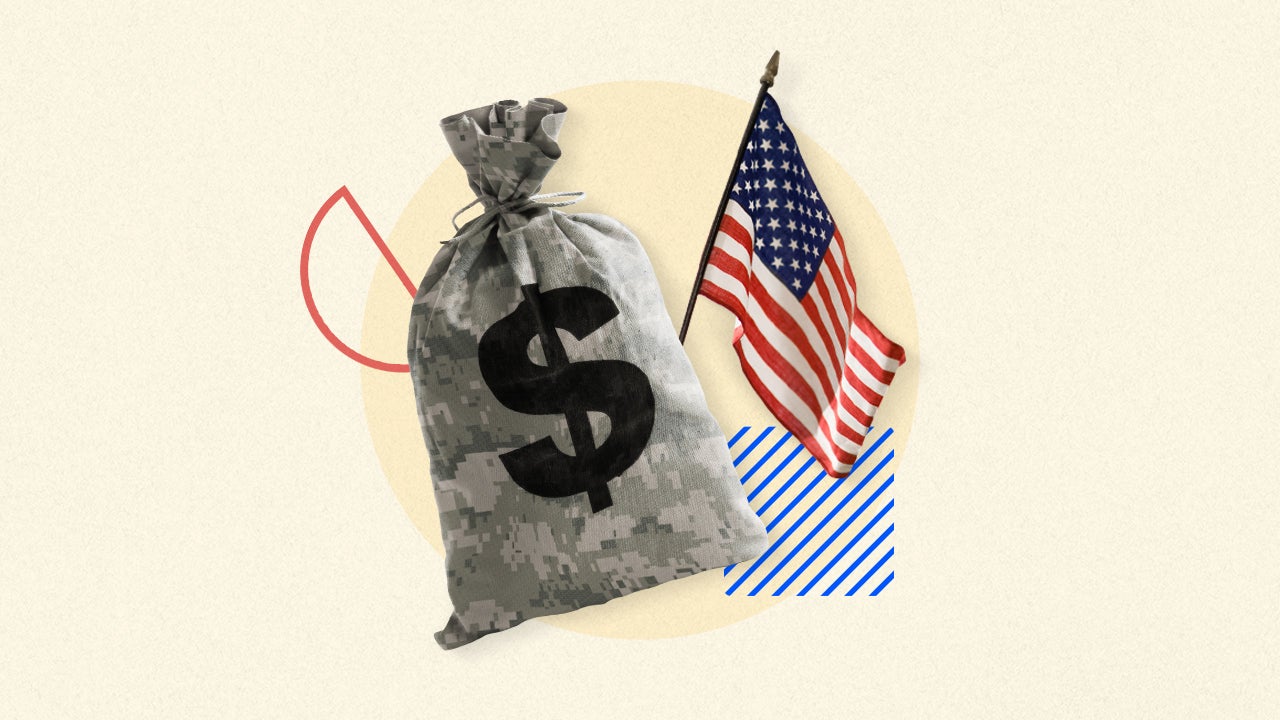FHA vs. VA loans: What’s the difference, and which is better for you?




Key takeaways
- FHA loans are available to any potential borrower who meets the qualifying criteria, while VA loans are only available to active-duty military, veterans and their surviving spouses.
- You can get a VA loan for no money down, but FHA loans require a down payment of at least 3.5 percent.
- FHA loans require an upfront and ongoing mortgage insurance premium, while VA loans require an upfront funding fee.
Both FHA and VA home loans come with attractive benefits, including flexible lending guidelines, often-competitive interest rates and low down payments. But they have important distinctions too. Here’s everything you need to know about the differences between FHA loans and VA loans.
FHA loans vs. VA loans
FHA and VA loans are government-backed loans issued by private lenders to qualifying borrowers. FHA loans are insured by the Federal Housing Administration (FHA) and have lower minimum credit score and down payment requirements compared to conventional loans. VA loans, which are granted to U.S. military veterans, service members and surviving spouses by private lenders, are guaranteed by the U.S. Department of Veterans Affairs.
| FHA loan | VA loan | |
|---|---|---|
| Eligibility | Anyone who meets FHA loan requirements | Active-duty military service members, veterans and spouses |
| Property type | Primary residence | Primary residence |
| Down payment | At least 3.5% | No down payment required |
| Minimum credit score | As low as 500 | No requirement, but lenders prefer 620 or higher |
| DTI ratio | Up to 50% | Up to 41% |
| Mortgage insurance and fees | Upfront and ongoing mortgage insurance premiums (MIP) | Upfront funding fee |
| Current interest rate (30-year fixed-rate purchase) | FHA loan rates | VA loan rates |
| Closing costs | Between 2% and 6% of the home’s purchase price | Between 1% and 6% of the loan amount |
| Loan limits | $524,225 for a single-family home in low-cost areas; $1,209,750 in high-cost areas |
No limit on loans over $144,000 with full entitlement; varies by county with partial entitlement |
Eligibility: FHA vs. VA loans
Anyone who meets the credit score, down payment and DTI ratio requirements can apply for an FHA purchase or refinance loan. To get a VA loan, you must be an active-duty member of the military, a veteran or military spouse. You’ll also need a certificate of eligibility (COE).
Property type: FHA vs. VA loans
Both an FHA loan and a VA loan can fund a primary residence purchase. Eligible property types include single-family homes, manufactured homes, condos, townhouses and multi-family properties of up to four units.
Down payment: FHA vs. VA loans
The down payment for an FHA loan is at least 3.5 percent. If your credit score is between 500 and 579, you’ll need a 10 percent down payment. By comparison, a VA loan can be had for no money down.
Credit score: FHA vs. VA loans
The VA itself doesn’t have minimum credit score criteria. Many VA lenders, though, like to see a credit score of at least 620. If your score is lower, you might still be able to get a loan, but the terms will likely be less generous. The FHA allows for a lower credit score: as low as 580 (or 500 with a 10 percent down payment).
Debt-to-income ratio: FHA vs. VA loans
Your debt-to-income ratio, or the amount of your gross monthly income divided by your monthly debt payment, is another important qualification factor. The FHA allows a debt-to-income (DTI) of up to 43 percent — up to 50 percent in some cases. The VA doesn’t set specific income requirements or debt thresholds for its mortgages. However, it typically requires borrowers to have a debt-to-income ratio of 41 percent or less.
Mortgage insurance and fees: FHA vs. VA loans
With an FHA loan, even on a refinance, you pay an upfront and an ongoing mortgage insurance premium. The idea is that if you default on the loan, the lender is reimbursed from the mortgage insurance fund.
You don’t pay mortgage insurance with VA loan purchase or refinance loans. Instead, you pay an upfront funding fee based on your loan amount and your military service, as well as other factors.
With both types of loans, you can choose to pay the fee separately or roll the fee into the total cost of the loan.
Mortgage rates: FHA vs. VA loans
As of March 2025, the average 30-year FHA APR was 6.95 percent, higher than the 6.61 percent average rate for a 30-year VA loan, according to Bankrate.
In contrast, the average interest rate for a 30-year conventional loan was 6.76 percent.
Closing costs: FHA vs. VA loans
If you use an FHA loan, closing costs can run between 2 and 6 percent of the home’s purchase price. VA loans have closing costs, too, but they can start at 1 percent and go up to 6 percent of the loan amount. With a VA loan, you can negotiate with the seller to pay up to 4 percent of the closing costs as a concession.
Loan limits: FHA vs. VA loans
FHA loan limits vary based on the type of property and the location, with different limits for low-cost areas and high-cost areas. In 2025, the FHA loan limits for single-family homes range from $524,225 to $1,209,750, with the former being for low-cost areas and the latter being for high-cost areas.
As of 2020, veterans, service members and surviving spouses with a full remaining entitlement do not have a VA loan limit. VA loan limits only apply if you’ve already used some of your entitlement — meaning you have partial entitlement — and these limits vary by your county of residence.
Can you refinance FHA and VA loans?
If you meet the qualifying criteria, you can refinance either an FHA or VA loan, or refinance another type of loan into one of these types of loans, to lower your interest rate, shorten your loan term or take cash out. Both programs have a “streamline” option that minimizes paperwork and underwriting.
The VA offers veterans one option for refinancing a conventional mortgage into a VA loan. It is a VA cash-out refinance. This type of refinance can be lengthy, involving nearly as much paperwork and review as a VA loan to purchase a home. Lenders will want to review your credit score, debt-to-income ratio and income. A home appraisal will also be required.
It is also possible to refinance a conventional mortgage into an FHA mortgage. The two options available are the FHA cash-out refinance and FHA 203(k).
Learn more:
Pros and cons of FHA vs. VA loans
FHA loans and VA loans each come with their own sets of pros and cons to weigh.
Pros and cons of FHA loans

Pros
- Low minimum down payment requirement of 3.5 percent
- Low minimum credit score requirements (580 with 3.5 percent down or 500 with 10 percent down)
- Likely easier to qualify for, meaning you can become a homeowner faster

Cons
- Has loan limits that cap how much you can borrow, which vary depending on your home's location
- Has upfront and annual mortgage insurance premiums
- Must meet FHA's minimum property requirements to qualify
Pros and cons of a VA loan

Pros
- No down payment required
- No mortgage insurance
- Low closing costs
- Often charges lower interest rates
- No prepayment penalties if you pay off your loan early

Cons
- Must pay a required VA funding fee
- Less flexibility to waive certain contingencies, like a home inspection
- Limits to what type of property you can purchase (intended for primary residence)
Which works best for you: FHA loan or VA loan?
Deciding whether an FHA or VA loan is best for you will depend on your financial circumstances and needs. While FHA loans are accessible to more borrowers, VA loans could be the better option, as the terms are more generous. For instance, VA loans do not require a down payment or mortgage insurance and usually have more lenient credit requirements, making it easier to qualify if you have a poor credit history or little cash.
Of course, there’s one big caveat: You need to have military service (or be a military spouse) to be eligible for a VA loan.
If you don’t qualify for a VA loan — or even if you do — an FHA loan could be an appealing alternative. These mortgages can be easy to qualify for, given their low minimum down payment and low minimum credit score requirements. The application process is a tad quicker and less complicated — no need to get a COE — and you might find a bigger range of lenders to choose from.
FAQ
You may also like


VA loan benefits and disadvantages


